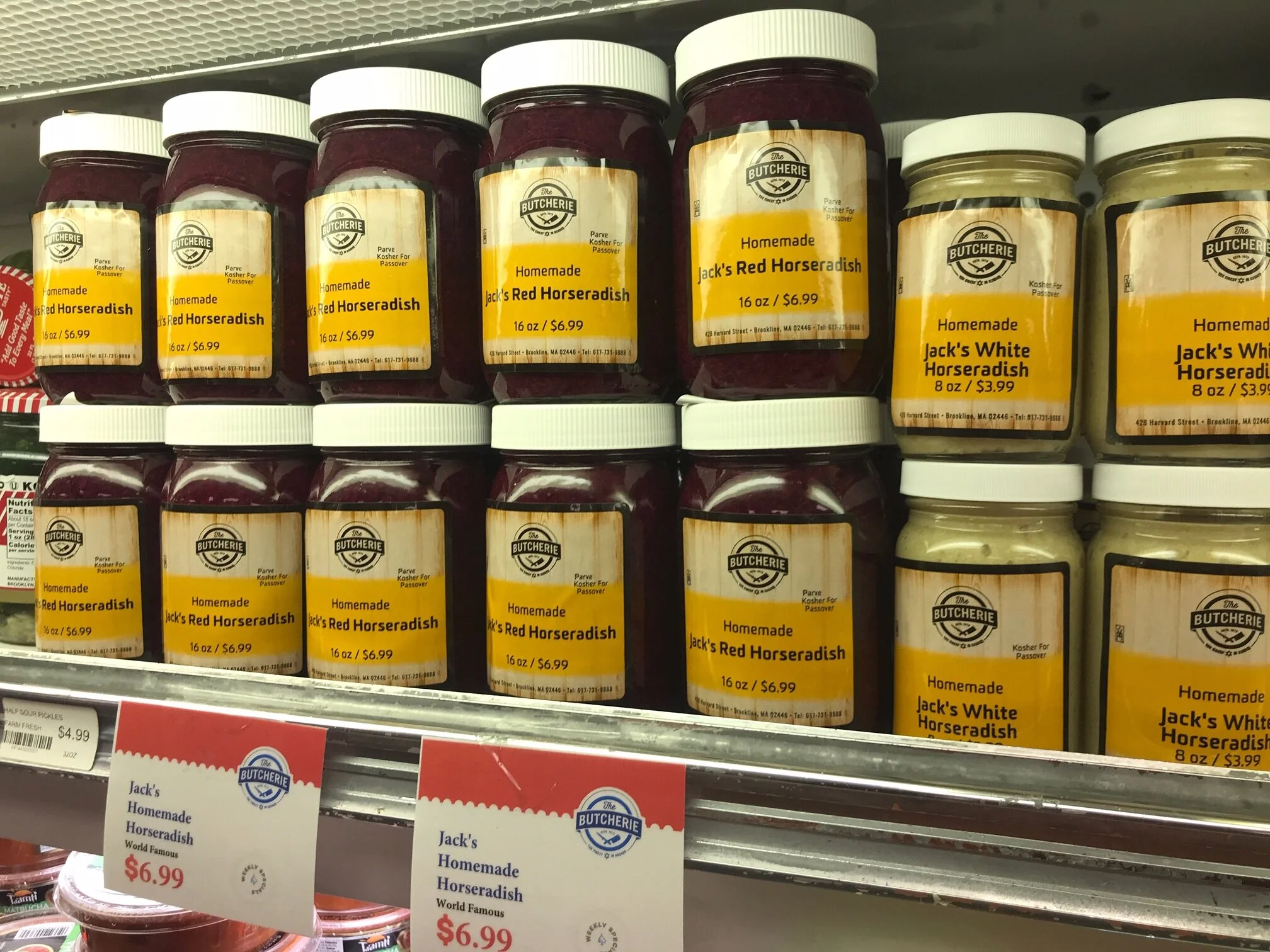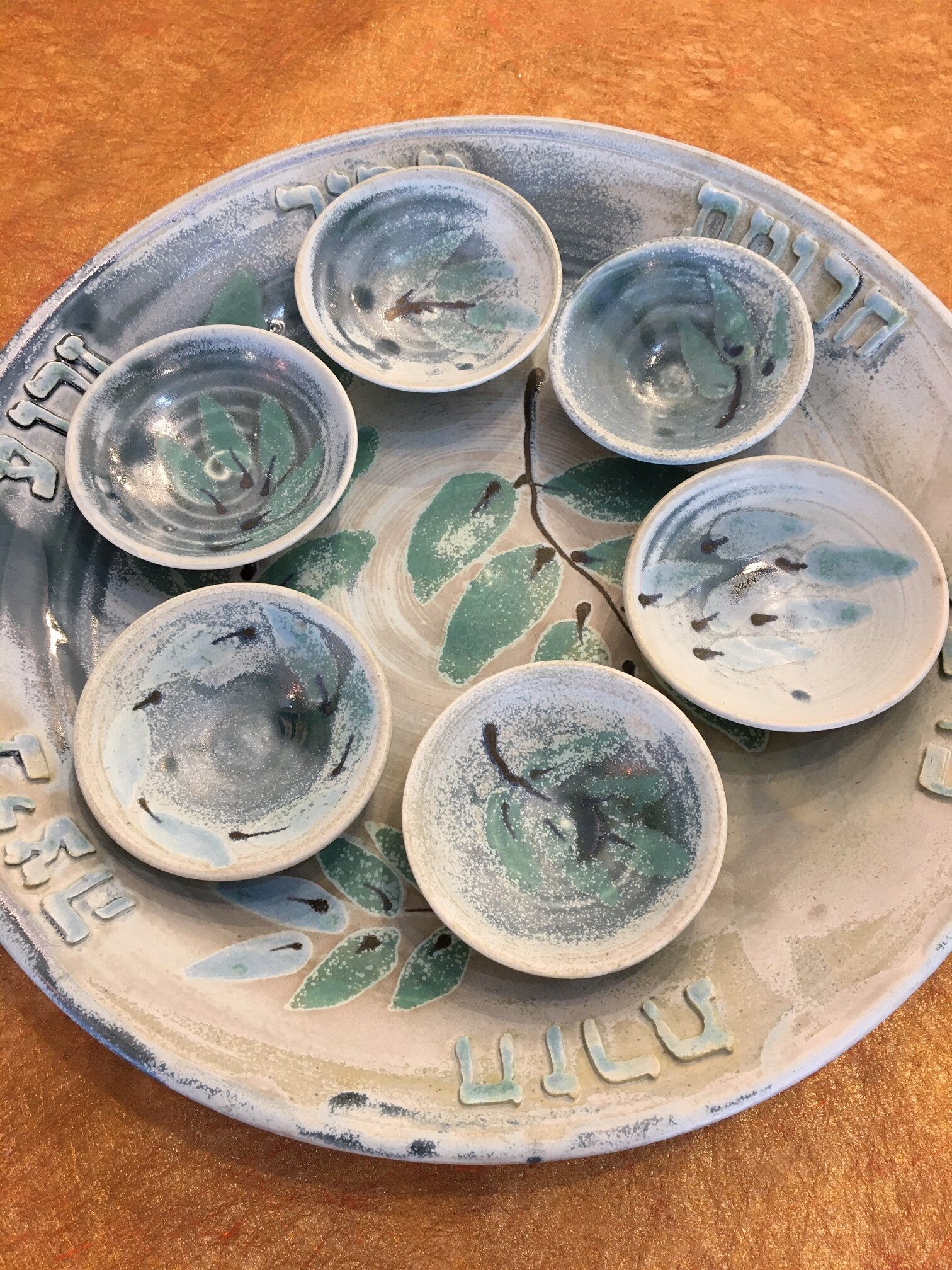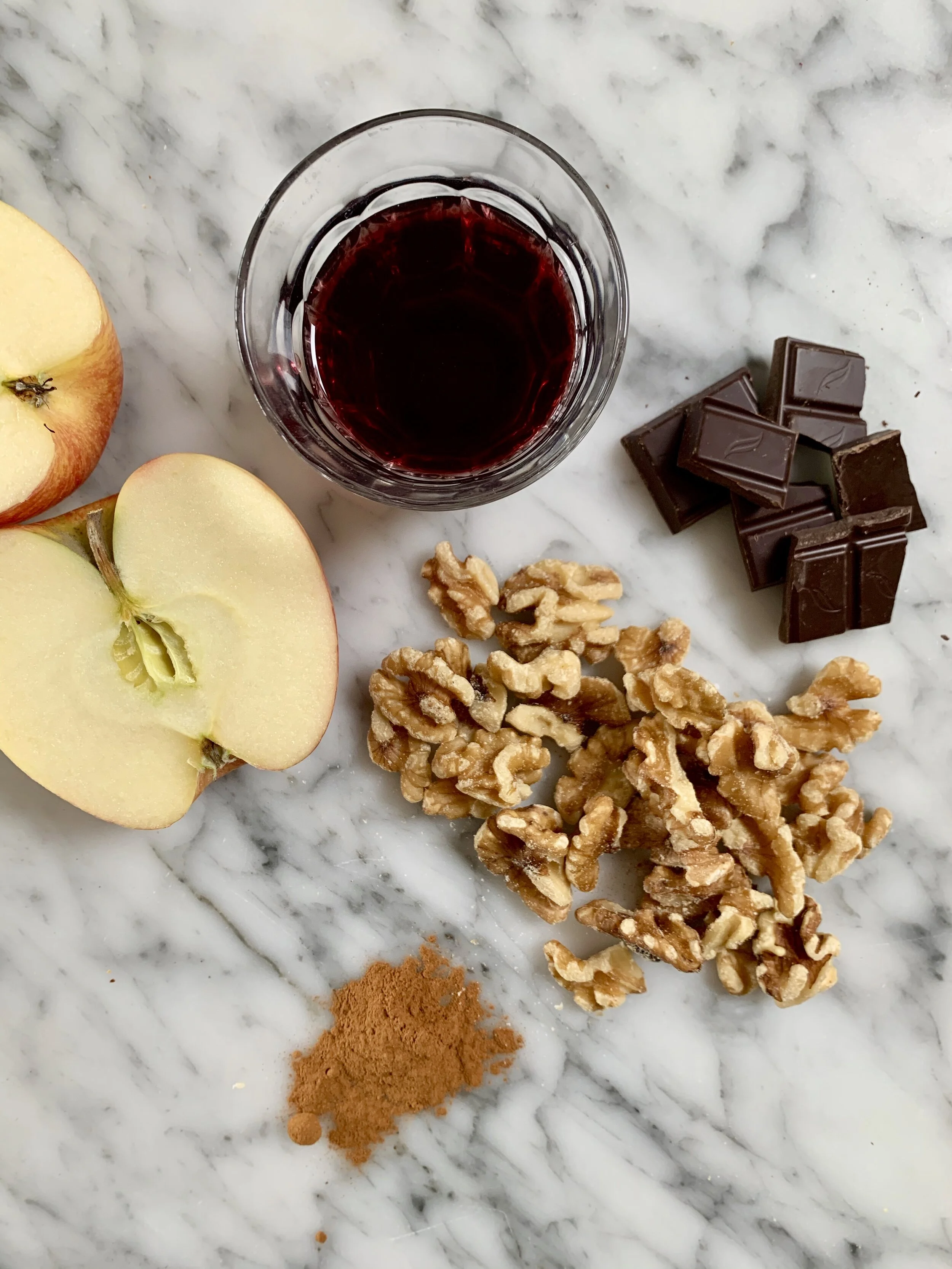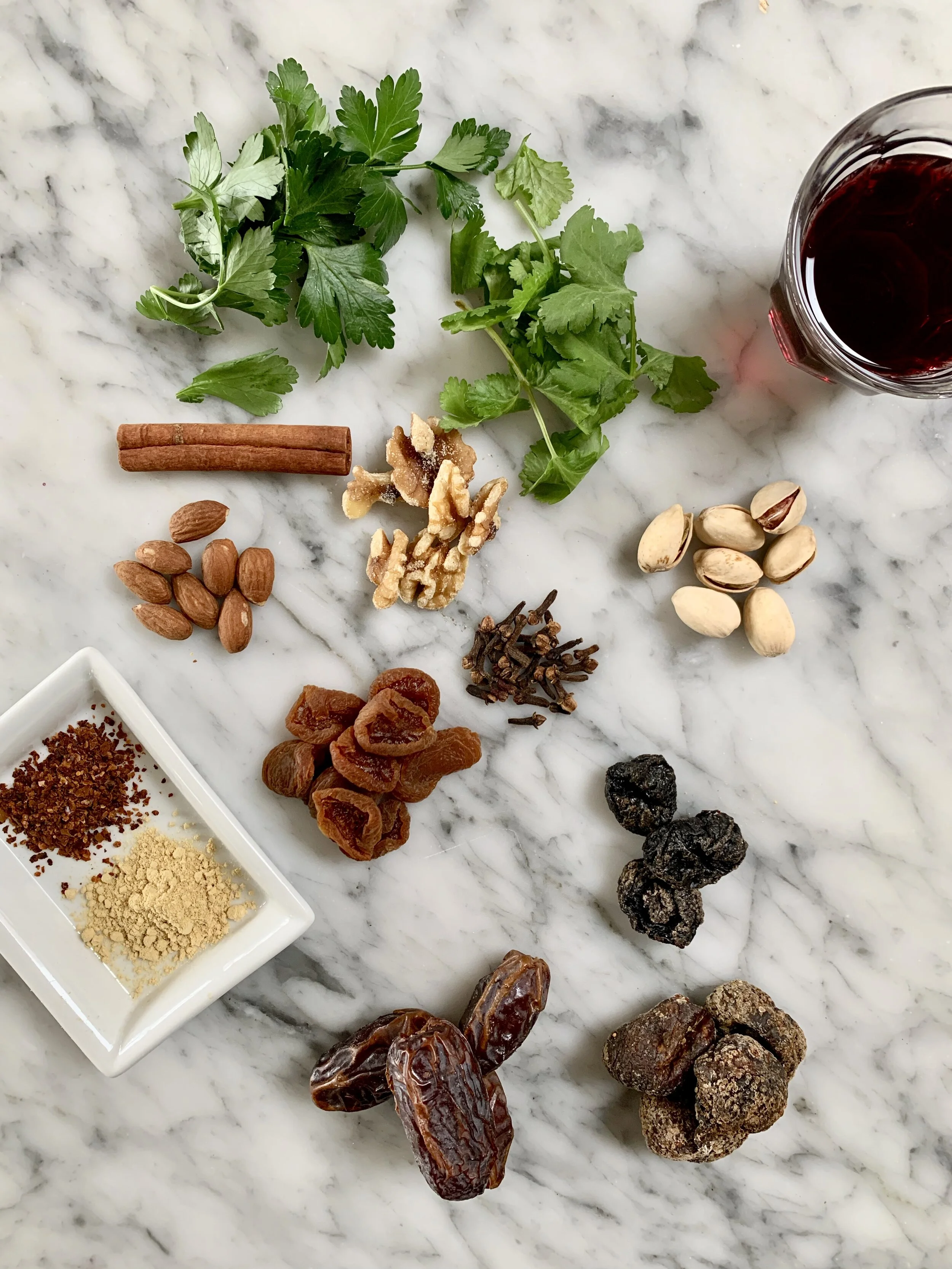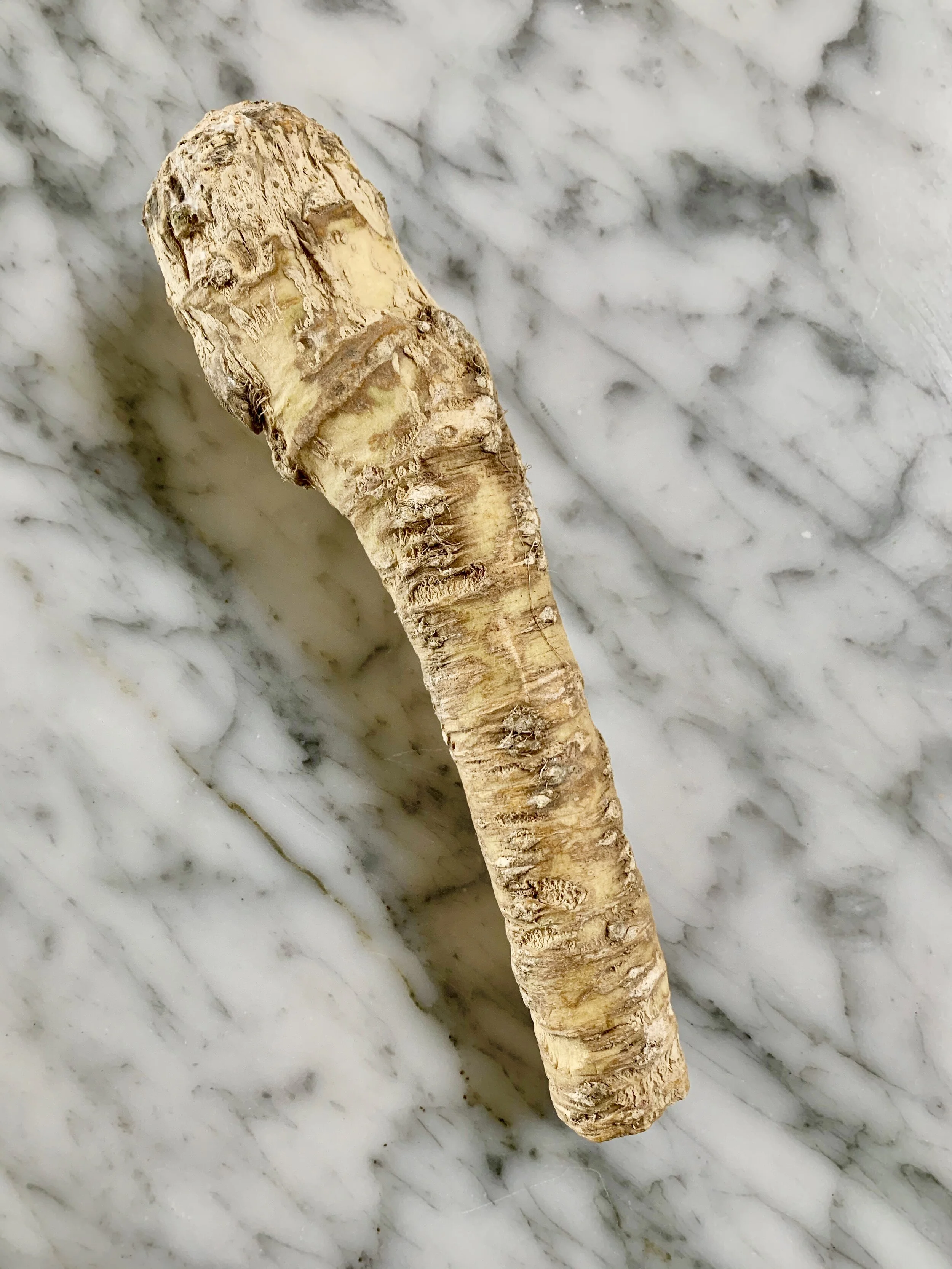What's on the seder plate? Boston chefs broaden Passover traditions with global and local flavors
[With the first Passover seder on Wednesday evening, April 8, in the midst of Covid-19 when physical distancing is the new norm, Jewish families are having to re-imagine their seders for a holiday cherished for its theme of welcoming strangers. Instead of the large multi-generational gatherings of extended family and friends, many will be turning to technology, sharing their seder remotely. Jewish organizations and synagogues in Boston and across the state are gearing up to offer a wide array of online communal seders. You may be adapting the recipes for fewer people, but the passion for Passover's unique delicious, spring-time favorites is still center stage.]
Chop, chop, chop the haroset fine; apples, cinnamon, nuts and wine.
As chef Avi Shemtov stirred a pot of fragrant apples cooking on the stove at Simcha, the owner of the year-old restaurant in Sharon spontaneously broke into the rhyming lyrics to a Passover song from his childhood.
The playful tune that he learned years ago in Hebrew school at Temple Adath in Sharon both amused and baffled the young Shemtov, he told me on a recent Sunday morning as he demonstrated his family's unique recipe for haroset. It's one of the symbolic foods that are part of the Passover seder, a ritual-filled participatory ceremony and elaborate meal at the start of the eight-day holiday centered around the retelling of the biblical story of the Exodus.
The sweet, textured haroset is a reminder of the mortar used by the ancient Israelites in building the pyramids when they were enslaved in Egypt.
To Shemtov's surprise, the ingredients in the song didn't include chocolate, like the haroset prepared by his Israeli born father, Yona.
"I'm like, what about the chocolate? I honestly didn't know there wasn't chocolate in haroset," he recalled thinking.
All these years later, Shemtov has created his own version of haroset that includes his father's inventive flair, a Passover tradition now carried on to a new generation with his two young children.
As Passover approaches, beginning this year on Wednesday evening, April 8, I checked in with some local chefs who are drawing from global and local flavors for the traditional ritual seder foods. An added bonus: locally made grated horseradish, and several Boston artists offering unique Passover Judaica to beautify the seder.
The symbolic seder foods: A multi-sensory experience
The festive seder table dazzles the eye, filled with a bewildering assortment of foods.
The seder plate, often in the center of the table, displays small portions of the ritual foods. In addition to the haroset, sprigs of green parsley represent hope and spring's renewal; a horseradish root and bitter greens signify the bitterness of slavery; a roasted egg is a sign of fertility; and a shank bone harkens back to the ancient Passover sacrifice. Vegetarians often substitute a roasted beet instead of the shank bone.
Squares of matzah, a symbol of the Israelite's haste as they fled Egypt, are also on hand. Vermatzah, in Vermont, makes artisan handmade rounds of matzah.
Each of the richly symbolic foods represents an important aspect of the story that is told, according to Rabbi Howard L. Jaffe, senior rabbi at Temple Isaiah in Lexington. "It's designed to heighten our awareness," Rabbi Jaffe said.
The seder "touches several senses and turns what could be a dry retelling into a lively multi-sensory experience," Rabbi Jaffe reflected.
Setting the seder table: Move over, horseradish and shank bone. Make room for an olive and an orange
The Passover story is ancient, but its universal themes of freedom and welcoming the stranger resonate across cultures and generations inspiring innovations and new traditions that reflect contemporary social issues and the diversity of Jewish life.
Rabbi Jaffe's family seder table includes an olive as a sign of peace, and like many other families today, there's an orange, representing inclusion. In addition to a cup of wine poured for the prophet Elijah, many seder tables now include a cup of water for Miriam the prophetess, the older sister of Moses, reflecting her central but often neglected role in the Passover story and her association with water.
A seder table with a difference: The Shemtov's touch of chocolate and a traditional Sephardic egg and meat stew
Avi Shemtov's haroset (recipe follows) is a riff on the chocolate-infused haroset made by his dad, Yona Shemtov, a retired chef and restauranteur from a Sephardic-Turkish family. The elder Shemtov recalled his mother's haroset, a spread made of raisins, dates, pistachios and sweet kosher wine. Adding chocolate was his own inspiration.
By contrast, Ashkenazi-style haroset, from Eastern and Central Europe, made of apples, wine, walnuts and cinnamon, is chopped or diced.
Also served as part of the Shemtov's seder ceremony is the Sephardic egg dish Huevos Haminados, eggs poached in hamin, a slow-cooked stew of chicken, lamb, potatoes and beans. Once peeled, the eggs, which acquire a golden light brown hue in cooking, are a rich, slightly smoky, melt-in-your-mouth delight. There are vegetarian versions of this dish as well, like Joan Nathan’s Huevos Haminados con Spinaci from her book King Solomon’s Table, which she very generously allowed us to reprint here; recipe below.
Tony Maws' haroset journey: From his Ashkenazi Baba to the zest of Moroccan flavors
Tony Maws, who for many years offered a hugely popular Passover menu at his acclaimed Cambridge restaurant Craigie on Main, has the fondest memories of his Ashkenazi grandmother Baba Hannah's signature Passover dishes, including a chunky apple-walnut haroset. But the award-winning chef is also dipping into Sephardic flavors. His Moroccan-inspired haroset is a blend of dried fruit and nuts, cilantro and parsley, with warm spices like cinnamon, ginger and cloves. His recipe follows.
[Prior to the closing of restaurants and other public events due to the Coronavirus, Maws had planned a Passover cooking class featuring the flavors of Israel, in collaboration with Curio Spice. Let’s hope they run the class next year.]
The bitter herbs: Three generations of locally made horseradish
At The Butcherie in Brookline, a multi-generational tradition of bottling homemade grated horseradish is alive and well with a well-guarded recipe that goes back some four decades to the late Jack Gelerman, one of the founders of the family-owned kosher market.
Jack's Horseradish is an outstanding, sharp blend of grated horseradish, beets—giving it a vibrant red color—and a touch of sweetness and vinegar, according to Josh Gelerman and Gilli Zilberberg, two of the shop's three co-owners. There's also a bit of wine, they revealed.
It's a big operation involving some ten staff that they undertake only at Passover and for the High Holidays, a loving tribute in memory of Jack.
Making the horseradish and eating it at their own seders stirs fond memories of their relative, Josh and Gilli said.
"He was very proud of it."
Chef Tony Maws also makes a fresh prepared horseradish that is very similar to the Gelermans’ recipe. His method is below.
It's a mitzVah: Local artists beautify the Passover table
In the Boston area, local artists and craftspeople are creating unique handmade items for Passover in a wide variety of designs and styles, from the elegant to the whimsical, according to Dana Sobel, the art buyer at Kolbo, a Judaica gallery in Brookline.
The shop features a seder plate by Pottery by Alysha, a Newton based potter, a stunning wheel-thrown plate with separate small ceramic bowls for each of the symbolic foods.
Glazed in pale earth tones with touches of green and blue, the plate is decorated with a graceful, understated leaf motif. The Hebrew name for each symbolic food is fashioned by hand in clay and surrounds the rim of the plate.
Among the Newton-based potter's other seder pieces is a haroset serving bowl that matches the seder plate.
A pair of hand-built ceramic seder plates and Elijah and Miriam cups are made by Pamela, another local artist whose work is represented by Kolbo. A pale blue-gray textured round plate is a base for the separate small bowls for the symbolic seder foods.
The goblet-like Miriam's cup glistens in the same bluish-gray glaze.
"It has a very organic feel to it," Sobel observed.
A matzah cover and table runner made by Rabbi Eliana Jacobowitz sets the stage for a lively seder. Years before she became a rabbi at Temple B'nai Brith in Somerville, Jacobowitz was a design student in Israel where she was born and raised. Her Judaica designs are available on Etsy.

